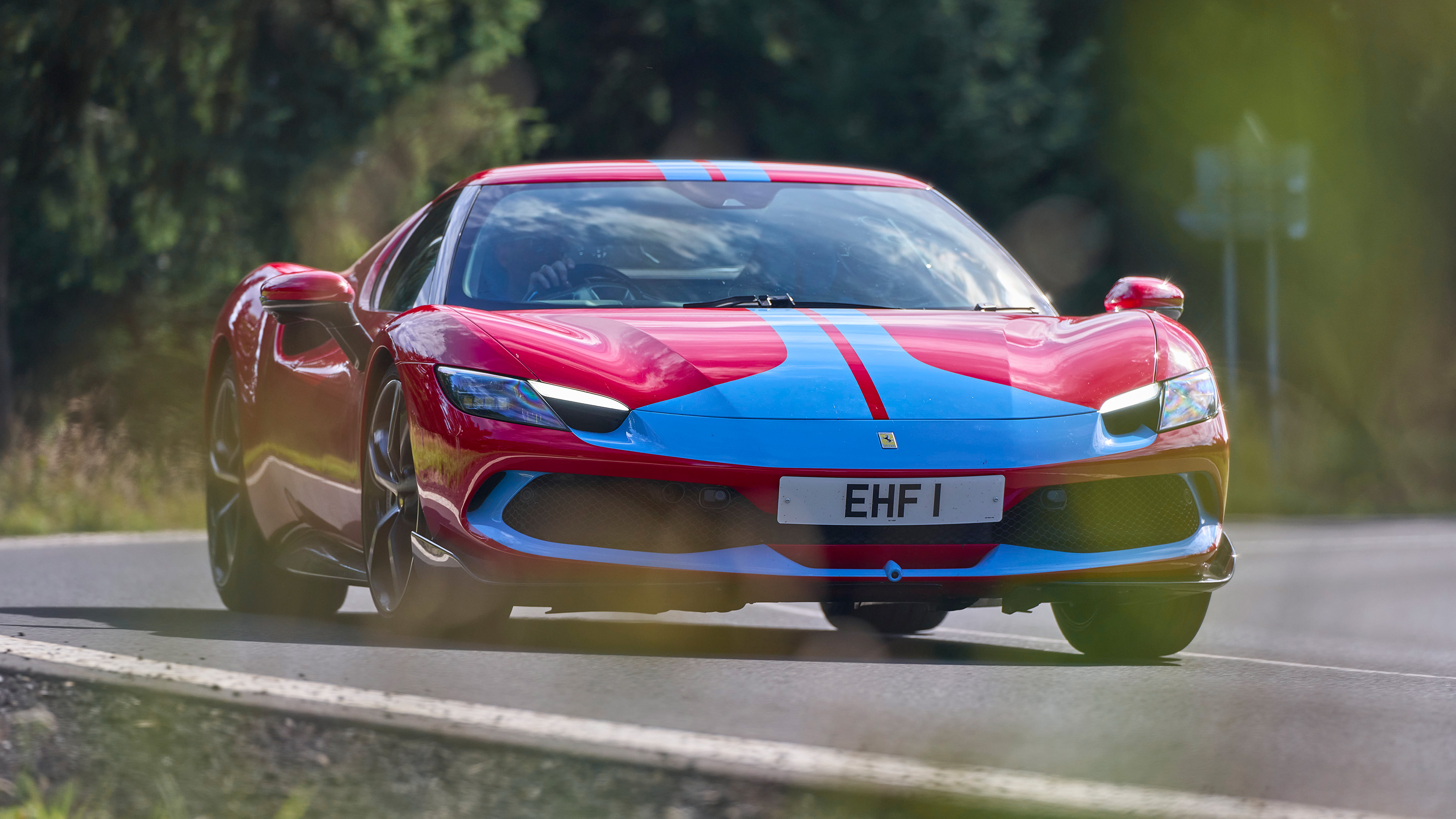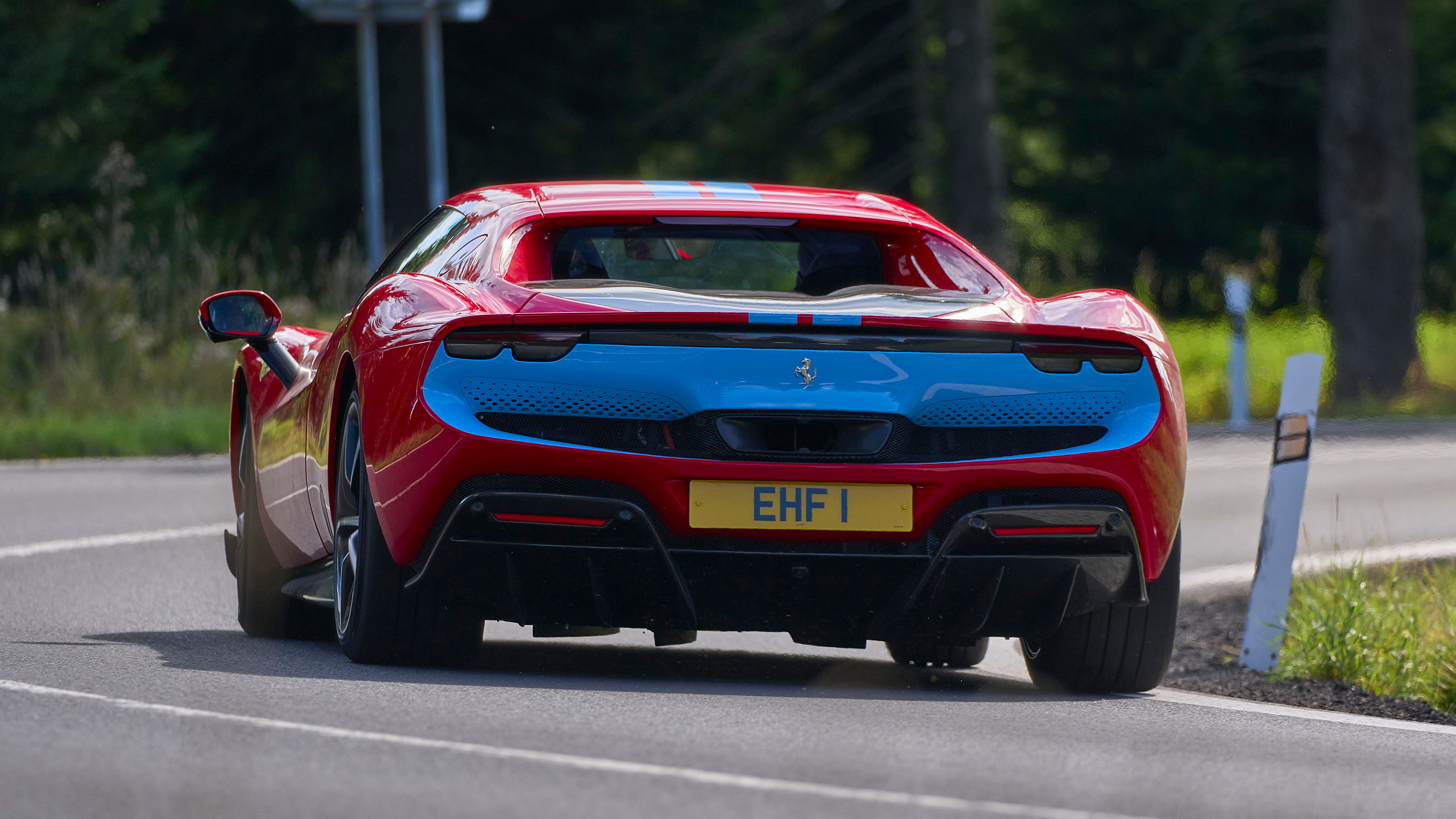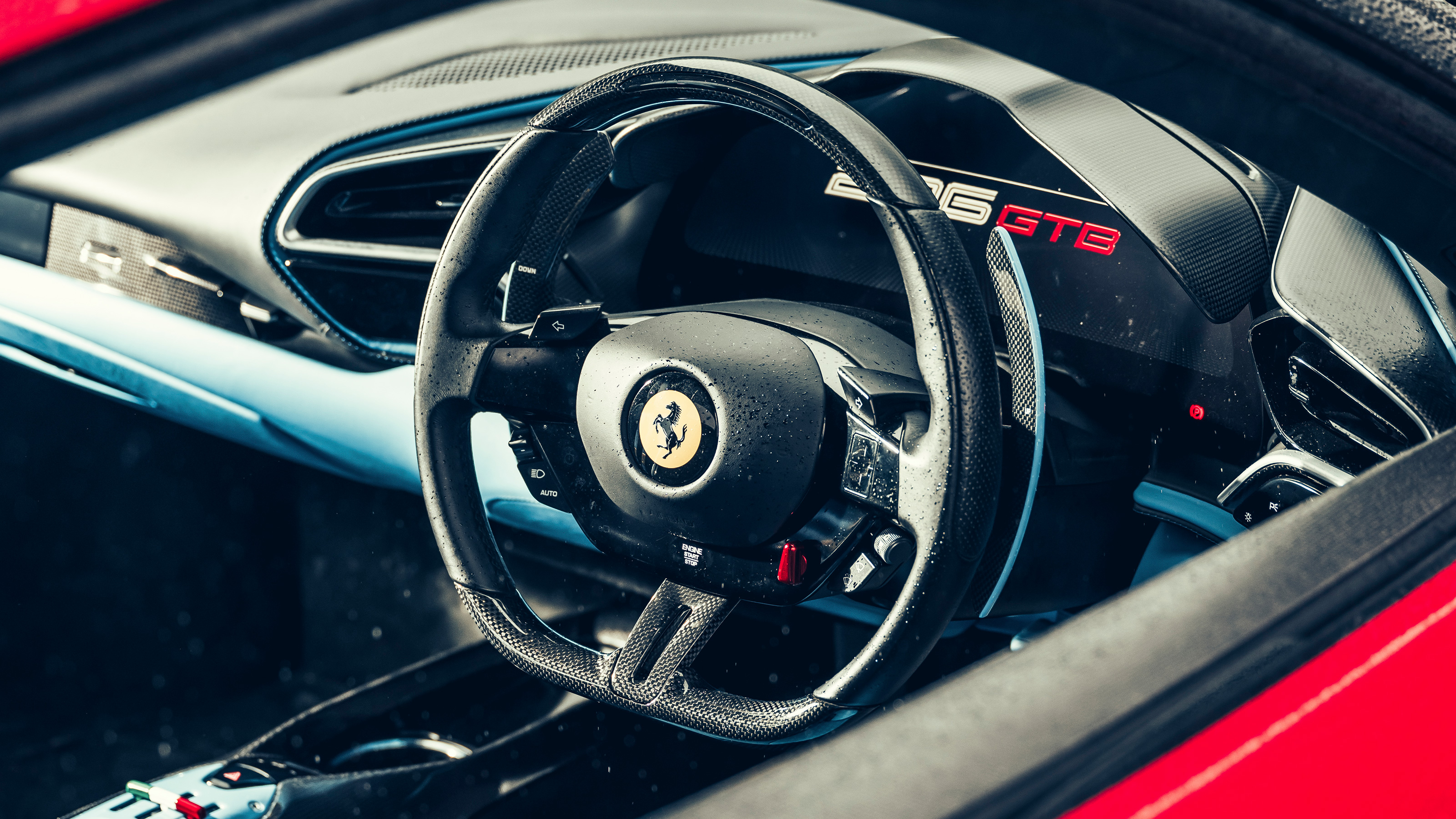
Ferrari 296 GTB review
Driving
What is it like to drive?
Let’s go on track first, and jump in a car wearing the heavy handed stripes of the Assetto Fiorano pack. We’re not convinced by it, because your £25,920 outlay only shaves 12kg from the 1,470kg dry weight (we weighed our UK test car at 1,620kg with a full tank), most of it the lightweight Lexan engine cover. The extra 10kg of front end downforce courtesy of small deflectors ahead of each front wheel is also completely by-the-by.
The two main ‘benefits’ – if you think they are – are the fixed rate Multimatic dampers and the Michelin Cup 2R (instead of PS4S) tyres. To be honest, we wouldn’t bother. It changes the cars demeanour and reduces its road usability. Not having adaptive dampers is a pain.
Would you have the Assetto Fiorano pack for track use, though?
We are yet to drive a non-AF car on track, in fact, so haven’t done a direct comparison. With it, and with the manettino twisted to Race mode, the 296 is stunningly capable. The brakes, the turn-in bite, the grip. It’s a car that really knows how to conduct itself on a circuit, through fast sweepers and slow hairpins.
But the full fury of the power delivery is being contained by the electronics at the exits, so we switch to CT Off. Oh. My. God. Race was a protective cloak. Now things are really moving around, the tail wags on the way into corners, through them, and out the other side.
The stability is still on, but it’s nodding encouragement from a distance away. The front end is faithful and true, but the back is… mobile. But with control, with safety. It’ll only let the rear wheels get so far out of line, but it's a reminder that 819bhp makes for a very, very fast car. It'll do 0-62mph in 2.9secs, says Ferrari, 0-124mph in 7.3secs. Dizzying acceleration from that searing, soaring engine.
Is it approachable, though?
It makes daft numbers and face-bending grip feel manageable and amusing. It's so biddable, dancing so precisely and predictably around. As a driver it goads you, teasing you to keep up, yelling encouragement when you do. The kind of car that makes you give yourself over to the dopamine rush.
The brakes are dazzling, not only for their power, but the way they manage the car. It’s a full brake by wire system, able to brake individual wheels, which makes it much more stable and predictable when you’re braking and turning at the same time. It also means the rear brakes are worked harder – so much so that Ferrari claims the stopping distance from 124mph has been cut by nine per cent. We can believe it. Rather than diving in on its nose, tail lifted, the 296 behaves like it’s been shoved down from above.
How was it on road?
In more gentle use, you can detect that the brakes operate in miniscule chunks rather than one smooth progression. But it’s a tiny thing, actually more noticeable when you release pedal pressure than apply it. But we didn’t get on with the short-travel pedal in the SF90. We do here. Ferrari’s clearly moved the game on fast.
At the other end of the scale the 296 generates speed without effort. It’s by no means alone in that, but so often these days the engineering necessary to give cars that astonishing rapidity further distances the driver from the experience. Not here. This is both a simple and tactile car to drive.
Simplicity and tactility are mutually compatible of course, but rare bedfellows in the electrified age where the battery ‘n’ motor mechanics are easily understood, but the end result often fails dismally to connect on a human level. Well, assuming you judge satisfaction to be more than smoothness and silence. And as a hybrid the 296 GTB is mating two incompatible power sources: exploding petrol and pulsing electrons. Voluptuous power curve meets torque from zero. And yet in hybrid mode it’s impossible to spot the joins.
Ferrari has never done hybrid better?
Exactly. It’s just as smooth and capable in electric mode as the SF90 (although this has a conventional reverse gear, not electric), but the 4WD system in that does interfere, makes you unsure about where exactly power is going, what it might do next. It’s a wheeled slingshot, but occasionally unpicks your trust.
Without the added complexity of 4WD, the 296 GTB is completely faithful. The same applied to the LaFerrari of course, but only by ensuring electricity was a token gesture there, a AAA thrown into the V12 bonfire. But here electricity plays more of a role, and the ability to silently, smoothly crawl around urban areas shouldn’t be underestimated.
Is it as immediate and convincing as a 458?
That was a real high point – and the last car that followed Ferrari’s traditional naming strategy: engine capacity followed by cylinders. This one does too… almost. It’s much closer to a 3.0 than a 2.9, but Peugeot might have had something to say about that.
Anyway, the 296 doesn’t quite have the stridency and manic top end fury of the 458’s nat-asp V8, but it does use the electronics and turbos to flatter the V6 rather than overwhelm it. Pedal response feels natural, the power curve is supported. It’s fast everywhere, where the 750S, for example, needs to get the turbos spooling. Out of corners, away from roundabouts, the places you’ll actually use the poke, this delivers an instant haymaker of urgent thrust, accompanied by a raspy soundtrack.
Featured

Trending this week
- Car Review
BMW iX3






